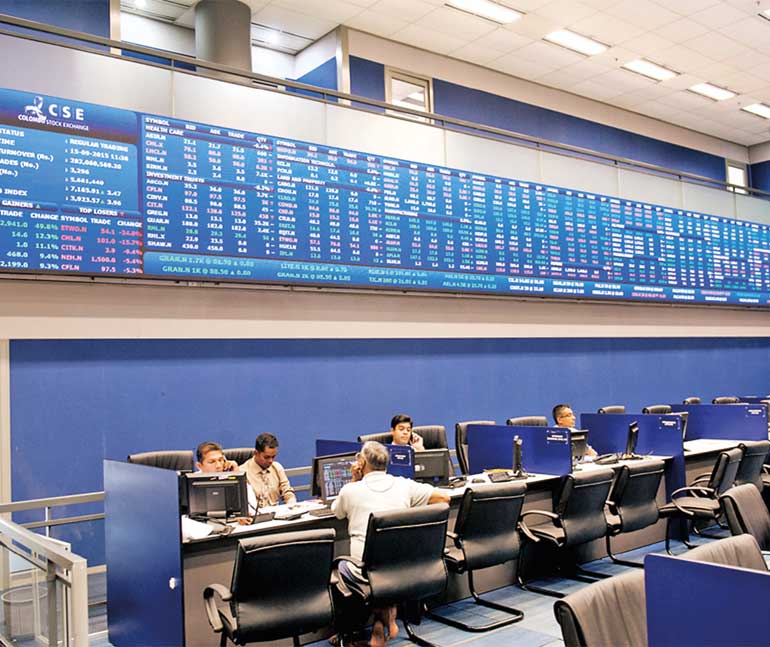Saturday Dec 14, 2024
Saturday Dec 14, 2024
Tuesday, 1 November 2016 00:01 - - {{hitsCtrl.values.hits}}
Government commitments to step up privatisation, repair its balance sheet and encourage more listings should help broaden the base of Sri Lanka’s capital markets and draw stronger flows of foreign direct investment (FDI) into the economy.
In April the Sri Lankan Government brokered a $ 1.5 billion loan agreement with the IMF, part of a three-year Extended Fund Facility program aimed at halving the country’s fiscal deficit, which rose 12% in 2015 to reach 7.5% of GDP.
A key plank of the deal is that the Government will work to privatise a number of state-owned enterprises (SOEs), which account for more than 80% of public debt. This in turn should boost their market capitalisation, providing a fillip to the country’s capital market as it seeks to regain emerging market status.

Among the SOEs slated for privatisation are state holdings in the tourism and travel segments – including the Hilton Hotel and the Grand Hyatt in Colombo – as well as enterprises in the financial and utilities sectors seen as having strong investor appeal.
The state-owned national carrier, SriLankan Airlines, whose accumulated losses reached $ 3 billion in March, is being downsized to improve its appeal for a potential sale. Though the exact nature and size of the deal sought is unclear, there have been reports of a 40% offering – the same amount previously owned by Dubai-based Emirates, which ran the airline from 1998 to 2008. The Government said it is seeking a ‘strategic investor’ to ‘reorient’ the carrier and its low-cost subsidiary, Mihin Lanka.
“We are getting restructuring advisory services and will then issue a request for proposals – and when expressions of interest come, we will pursue negotiations with those particular parties,” Deputy Minister of State Enterprises and Entrepreneurship Eran Wickramaratne told local press in June.
Having announced plans to privatise the carrier as early as May, the government launched a six-month restructuring plan in June, then advertised for bids in July, later extending the deadline for submissions into August. As part of the overhaul, routes to Frankfurt and Paris are to be cut starting this autumn, though flights to London and New York will continue.
Similar rationalisation is afoot at public providers of utilities such as the Ceylon Electricity Board, National Water Supply and Drainage Board, and Ceylon Petroleum Corporation. Long in the red due to public subsidies, these have hinted at near-term rate hikes that could bring the books closer into balance, an important pre-requisite for selling a stake to the private sector.
Also on the docket for sale is a further holding in Lanka Hospitals, which is majority state-owned through Sri Lanka Insurance Corporation, with an 8% stake also owned by private shareholders on the Colombo Stock Exchange (CSE). A range of foreign conglomerates have shown interest in acquiring majority ownership, including Kazanah Nasional, Malaysia’s sovereign wealth fund and the controlling shareholder of International Healthcare Holdings.
Such privatisations should lead to increased investor Interest and liquidity in the capital markets and significantly more FDI, according to Rohan Goonewardene, CEO of First Guardian Equities, a Colombo-based stock brokerage, told OBG.
“Achieving this milestone would send out a strong signal to investors about the maturity, sophistication and transparency of the domestic market place,” he said. “Investors will be more apt to park their funds in the country.”
Expected increases in foreign portfolio investment, driven by opportunities in infrastructure and banking, could also help transform the bourse and lift its capitalisation, according to CSE CEO Rajeeva Bandaranaike.
“The liberalisation of SOEs and non-core assets represents an important step on the path towards Sri Lanka achieving emerging market status,” he told OBG.
With higher trading volumes, Sri Lanka could eventually return to emerging market status on the Morgan Stanley Capital International (MSCI) indicator, a significant step forward for the country’s economy.
MSCI downgraded the country from emerging market to ‘standalone’ market in 2001 after a cease-fire was agreed in the country’s civil war, later upgrading the bourse to frontier market in 2007, on the back of three consecutive years of over 30% growth in its All Share Price Index.
Moving forward, the CSE has set a goal of reaching $ 50 billion in market capitalisation, significantly higher than the $ 20.9 billion seen at the start of 2015, though it has not yet suggested a date for meeting this target.
In a positive sign for such objectives, the IMF deal prompted a rise in capital inflows in the months after it was signed, with the rupee, the CSE and bond markets all seeing modest jumps in the weeks leading up to the signing on 29 April.
Stronger overseas interest in government paper, in particular, reflects increased confidence in the economy, markets and fiscal stability.
The improving macro environment and certainty about government policy and plans is starting to attract a stronger flow of capital, though it will still take time, according to Sujendra Mather, managing director of York Street Partners, a Colombo-based investment banking firm.
“Investment inflows are increasing to Sri Lanka, and while we see more investment opportunities in small and medium-sized space, the Sri Lankan economy and thus many Sri Lankan companies are still relatively small to attract large-scale investments,” he told OBG. “This will gradually change as the economy grows and key sectors start to grow aggressively.”